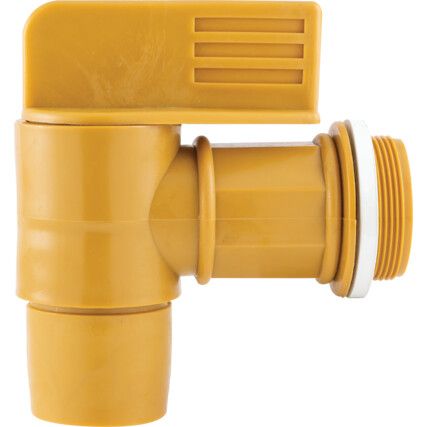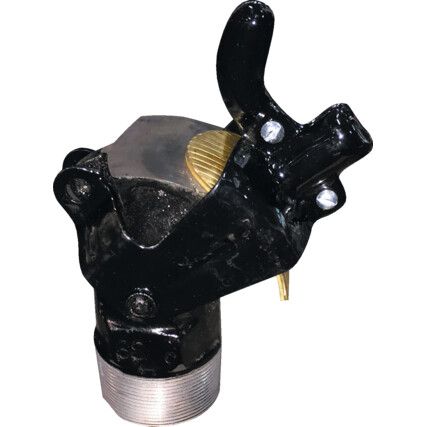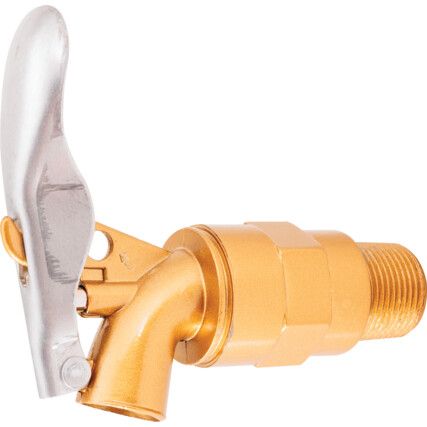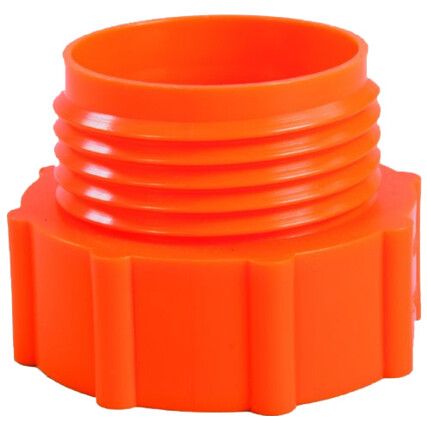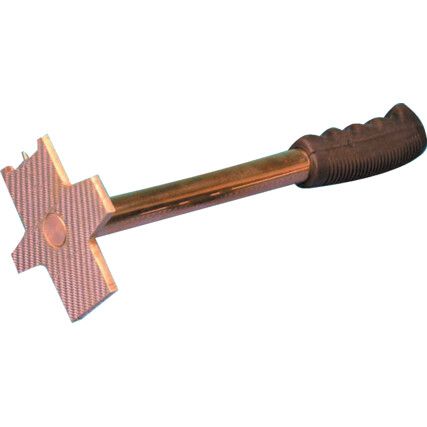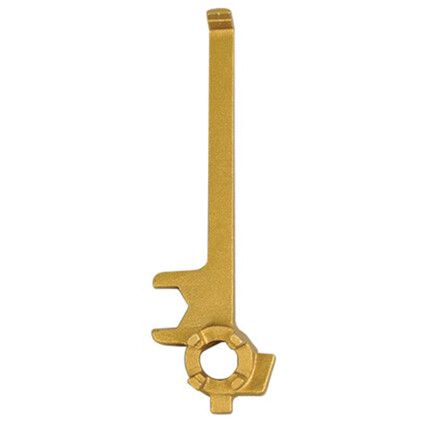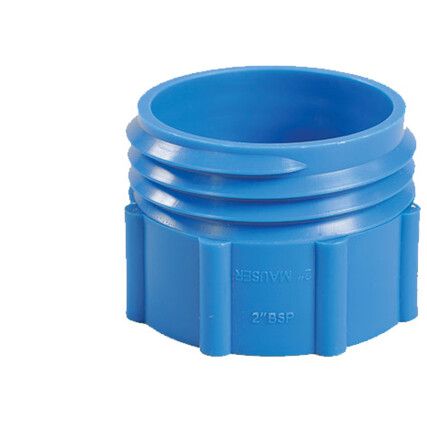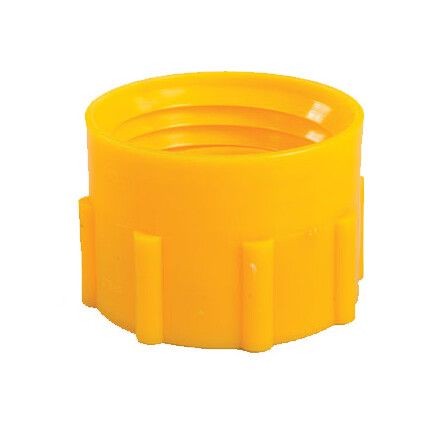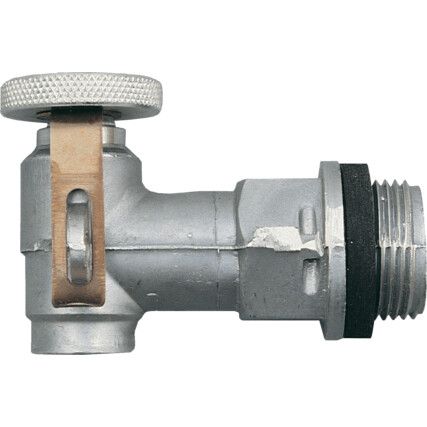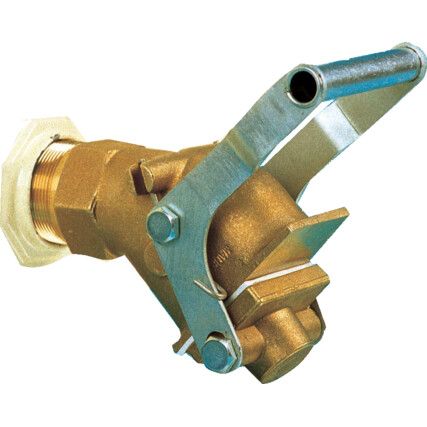Barrel Fittings & Accessories
Protect your staff against chemical spills with our selection of barrel taps and fittings. Ideal for decanting volatile chemicals and cleaning solutions in a controlled manner, our barrel (drum) taps are available in a range of materials to support safe chemical storage and fluid control in the workplace and help you stay COSHH compliant.
We stock a wide choice of barrel taps, both manual and self-closing from well-known supplier Hartle IGE®.
What are barrel taps & fittings?
Barrel taps provide an extremely convenient way to decant liquid in small amounts from a large storage barrel. Made to decant hazardous chemicals, such as oils and petrol, barrel taps are made from a range of durable materials, including stainless steel, brass and polypropylene to name but a few.
Why barrel taps & fittings?
Pouring a potentially hazardous liquid from a large barrel has safety implications and must be planned in accordance with COSHH regulations. Dispensing equipment like barrel taps and rotary pumps offer a quick and simple solution to dispensing liquids in a controlled manner.
Barrel taps & fitting types
There's a wide selection of drum taps and fittings on the market and choosing the right one for the liquid you want to dispense is an important decision, especially when dispensing flammable liquids. Additionally, considerations must be made when storing barrels and collecting excess liquid or drips from the tap. Below, we've outlined the material types commonly used for barrel taps and fittings, along with their advantages and benefits...
• Brass - One of the best materials for resisting corrosion and rust, these taps are ideal for outdoor storage. Used widely for decanting flammable liquids, brass doesn't generate sparks.
• Cast iron - Ideal for dispensing viscous fluid but are not self-closing.
• Galvanised steel - Resistant to red rust, this material is frequently used for accessories, like drip trays to collect excess liquid during or just after decanting.
• Steel - Constructed from high grade steel, these drum taps are corrosion resistant and essential when decanting volatile chemicals. However, not all steel taps feature a flame arrester (to block the risk of flames flashing into the barrel), which is a must when dispensing flammable liquids.
• Polyethylene - These manual drum taps are suitable for dispensing non-flammable liquids, like solvents and cleaning fluids.
Considerations when choosing barrel taps & fittings
• Type of liquid - flammable, corrosive or viscous, the type of liquid to be dispensed will dictate the drum tap material required.
• Drum size - the barrel tap used must correspond with the size of the drum to prevent excess pressure from damaging the tap seal and causing a leak.
• Fittings - barrel adapters, tap extensions, and seals must all be considered for their compatibility with the stored liquid. While accessories like drip trays collect any additional fluid to ensure a spill-free process.
• Features - Self-closing or manual, adjustable spout or internal flame arrestor are some of the features you can choose from to suit the application.
Barrel taps & fittings jargon buster
Barrel or drum taps are part of a wider category of chemical storage and control. Therefore, their use will likely fall under a COSHH assessment.
We want to keep you informed and up to date with safety standards and legislation so you can choose the best product for your needs. So, we've put together a brief explanation of COSHH to help you better understand the product applications of our range.
What does COSHH stand for?
COSHH means the Control of Substances Hazardous to Health and involves a process similar to a risk assessment called a COSHH assessment. The purpose of COSHH is to ensure that chemicals and other hazardous substances are properly handled and controlled to prevent accidents and illness from spillages or exposure.
There are five steps in a COSHH assessment...
- Gather and collate information on all substances used in your workplace, including brand names, Safety Datasheets, etc.
- Analyse the gathered information and determine the health risks each substance poses to staff.
- Draw up control measures to reduce or remove the risks.
- Ensure all analysis and risks are logged, along with the control measure implementation dates.
- Regularly monitor and review each COSHH assessment and control measures implemented.
FAQs
How do you open a new drum to fit a plug to it?
The easiest way is to use a drum opener tool, also known as a drum plug wrench. These are designed specifically to safely open the cap on a drum and prevent any splashing or spillages that may occur if the cap is hit with a hammer.
